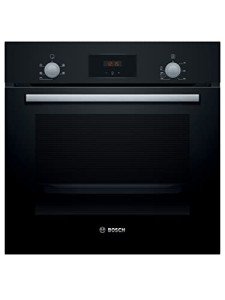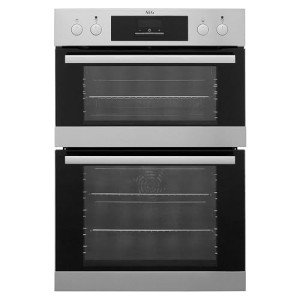Guide To Builtin Ovens: The Intermediate Guide Towards Builtin Ovens
작성일 25-05-20 20:56
페이지 정보
작성자Jessica 조회 9회 댓글 0건본문

The Rise of Built-in Ovens: Enhancing Modern Kitchens
In the ever-evolving world of home improvement, built-in ovens have actually emerged as a staple in contemporary kitchen style. These appliances not just provide a sleek and seamless visual but likewise contribute significantly to the performance and effectiveness of home cooking. This short article explores the various aspects of built-in ovens, including their advantages, types, setup factors to consider, and maintenance, along with often asked concerns to offer a thorough introduction.
What is a Built-in Oven?
A built-in oven is a device created to be installed into kitchen cabinetry, giving it a streamlined appearance and maximizing counter space. Unlike standard freestanding ovens, which stand alone and are typically bulky, built-in ovens fit flush with cabinetry for a more integrated appearance. They are offered in various sizes, styles, and features, catering to a vast array of culinary requirements and kitchen styles.

Benefits of Built-in Ovens
Built-in ovens come with numerous advantages that make them attractive to homeowners. Below are some of the crucial benefits:
- Space Efficiency: Built-in ovens save counter space while enhancing kitchen layouts.
- Customizable Design: They can be integrated into kitchen cabinetry, enabling house owners to tailor visual appeals according to personal taste.
- Boosted Performance: Many built-in ovens come geared up with innovative cooking innovations, allowing for much better heat distribution and faster cooking times.
- Availability: Their setup at eye level makes it easier to inspect food without flexing down, providing higher convenience and security.
- Resale Value: A modern, properly designed kitchen can improve residential or commercial property worth, making built-in ovens an investment worth thinking about.
Kinds Of Built-in Ovens
Built-in ovens can be classified based upon their design and function. The following list details the typical types of built-in ovens offered on the market:
- Single Ovens: A standard design that features one cooking compartment.
- Double bulit-in ovens: These come with two separate compartments, which enable cooking multiple dishes at various temperature levels.
- Wall Ovens: Installed into the wall for a space-saving service, these ovens offer convenience and ease of access and can be either single or double.
- Steam Ovens: These make use of steam for builtin Ovens damp cooking and are often favored for healthier meal preparation.
- Convection Ovens: Designed with a fan that circulates hot air, making sure even cooking and browning.
| Type | Description | Suitable For |
|---|---|---|
| Single Oven | One cooking compartment for standard baking and roasting. | Small families and cooking areas. |
| Double Oven | 2 compartments for synchronised cooking of different meals. | Large households with diverse menus. |
| Wall Oven | Built into the wall for easy access. | Space-conscious kitchen areas. |
| Steam Oven | Cooks using steam for healthier options. | Health-conscious individuals. |
| Convection Oven | Distributes hot air for even cooking and faster outcomes. | Baking enthusiasts and chefs. |
Installation Considerations
Picking to set up a built-in oven involves a number of factors to consider to guarantee that it fits seamlessly within the kitchen. Essential aspects consist of:
- Cabinet Dimensions: Accurate measurement of the cabinet area required for the oven is vital for a correct fit.
- Power Supply: Built-in ovens normally require a dedicated power supply; consulting a licensed electrician may be needed.
- Ventilation: Ensure that the oven's ventilation requirements are fulfilled to promote safe operation.
- Regional Building Codes: Compliance with local codes is necessary when installing any kitchen device.
It's strongly suggested that setup be carried out by professionals to guarantee security and adherence to manufacturer specs.
Upkeep of Built-in Ovens
Preserving built in oven uk-in Builtin ovens is important to ensure their durability and operation. Below are some tips for efficient upkeep:
- Regular Cleaning: Wipe down surface areas after each usage to avoid build-up; think about self-cleaning alternatives if readily available.
- Inspect Seals: Inspect the oven door seals regularly for wear and tear to maintain performance and prevent heat loss.
- Calibrate Temperature: Occasionally check and adjust oven temperature level settings if cooking results are inconsistent.
- Expert Servicing: Schedule regular upkeep with certified technicians for electrical parts and deeper cleaning.
Regularly Asked Questions (FAQs)
Q1: How do I pick the best size built-in oven for my kitchen?
A1: Measure the available cabinet space and Builtin Ovens consider the cooking routines of your home. Single or double ovens are typical choices based upon meal preparation needs.
Q2: Are built-in ovens more energy-efficient than freestanding ones?
A2: Built-in ovens can be more energy-efficient due to better insulation and advanced cooking innovation; nevertheless, real effectiveness depends upon the specific model and use.
Q3: Can built-in ovens be installed throughout the kitchen?
A3: Built-in ovens need specific cabinetry and may need a devoted power source, so planning their placement carefully within the kitchen layout is important.
Q4: What type of maintenance do built-in ovens need?
A4: Regular cleaning, examining door seals, calibrating temperatures, and expert maintenance as required are all elements of proper upkeep.
Built-in ovens are a remarkable addition to contemporary kitchen areas, providing both visual and useful advantages. Their space-saving design, customizable options, and advanced functions accommodate diverse cooking needs. When thinking about a built-in oven, property owners ought to consider their specific culinary preferences, kitchen layout, and upkeep abilities. By doing so, they would be making a valuable financial investment in their home, increasing both performance and design.
댓글목록
등록된 댓글이 없습니다.